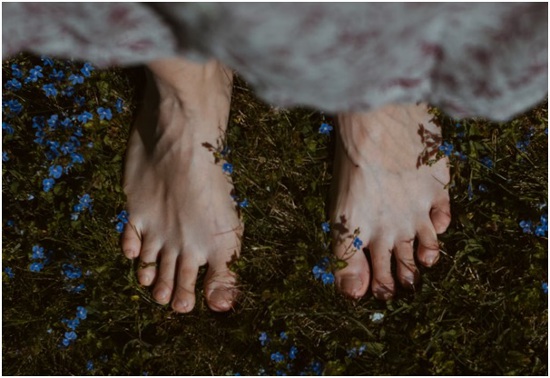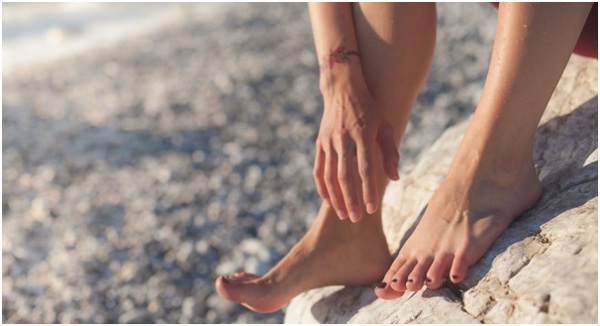Your feet are your foundation. They support you as you walk, run, and jump. And they work hard every day, carrying the weight of your whole body. It’s no wonder that sometimes they get tired, achy, or downright sore. If you’re experiencing pain in your feet, it’s important to take care of them as soon as possible. Ignoring the problem could lead to long-term damage and even disability. We will discuss the most common foot conditions and how to deal with them.


Diabetics Foot
The most common foot condition is diabetic foot. Diabetes can cause a number of problems for your feet, including nerve damage, poor blood circulation, and infections. If you have diabetes, it’s important to see a podiatrist (foot doctor) regularly. They will be able to monitor your feet for any problems and give you the proper treatment. You should also start wearing socks from Gold Toe that have a comfortable fit to help reduce foot problems. If you have diabetes, you should also:
- Wear shoes that fit well and protect your feet
- Inspect your feet every day for cuts, sores, or redness
- Wash your feet every day with soap and water
- Keep your toenails trimmed
- Wear socks that fit well and don’t bunch up
Athlete’s Foot
An athlete’s foot is a fungal infection that usually starts between the toes. It can cause itching, redness, and burning. It can also lead to cracked and blistered skin. Athletes’ foot is contagious and can be spread through direct contact with the fungus or by sharing towels, shoes, or other contaminated items. The best way to prevent an athlete’s foot is to keep your feet clean and dry. You should also wear sandals or flip-flops in public places like locker rooms and showers. If you have an athlete’s foot, it’s important to treat it right away. Otherwise, it can spread to your toenails and cause a more serious infection. There are several over-the-counter treatments for the athlete’s foot, including creams, powders, and sprays. If these don’t work, your doctor may prescribe a stronger antifungal medication.
Bunions
A bunion is a bony bump that forms on the joint at the base of your big toe. It can cause pain and swelling. Bunions are more common in women than men and often run in families. They can also be caused by wearing tight, ill-fitting shoes. If you have a bunion, you may need to wear wider shoes with more room for your toes. You can also try over-the-counter pads or shoe inserts to help relieve pain. If these don’t work, your doctor may recommend surgery to correct the problem. Additionally, you can try some at-home treatments to help relieve pain, such as soaking your foot in warm water or applying ice.
Ingrown Toenails
An ingrown toenail is a condition in which the edge of your toenail grows into the soft flesh of your toe. It can cause pain, redness, and swelling. If an ingrown toenail becomes infected, it can lead to a more serious infection. Ingrown toenails are often caused by wearing shoes that are too tight or by trimming your toenails too short. Additionally, tight shoes might also hurt your ankles which is another reason to avoid them. If you have an ingrown toenail, you may need to soak your foot in warm water and then use a cotton swab to gently push the edge of the nail out. You can also try over-the-counter treatments, such as creams or ointments. If these don’t work, your doctor may need to prescribe a stronger antibiotic.
Plantar Fasciitis
Plantar fasciitis is a condition that causes pain in the heel and bottom of the foot. It is often caused by overuse or by wearing shoes that don’t provide enough support. Plantar fasciitis can also be caused by being overweight or having flat feet. If you have plantar fasciitis, you may need to wear supportive shoes or use arch supports. You can also try over-the-counter pain relievers or anti-inflammatory medications. If these don’t work, your doctor may recommend a corticosteroid injection or physical therapy.
Achilles Tendonitis and Heel Spurs
Achilles tendonitis is a condition that causes pain in the back of the leg and heel. It is often caused by overuse or by wearing shoes that don’t provide enough support. Achilles tendonitis can also be caused by being overweight or having flat feet. If you have Achilles tendonitis, you may need to wear supportive shoes or use arch supports. You can also try over-the-counter pain relievers or anti-inflammatory medications. If these don’t work, your doctor may recommend a corticosteroid injection or physical therapy. Additionally, you may need to avoid activities that put stress on your Achilles tendon, such as running or jumping.
Heel spurs are bony growths that form on the heel bone. They can cause pain and swelling. Heel spurs are often caused by wearing shoes that don’t provide enough support or by being overweight. If you have a heel spur, you may need to wear supportive shoes or use arch supports. You can also try over-the-counter pain relievers or anti-inflammatory medications. If these don’t work, your doctor may recommend surgery to remove the spur. For example, for some people, wearing shoes with good arch support can help.
Claw Toes and Hammertoes
A claw toe is a condition in which the toe bends down at the joint, causing it to look like a claw. It can cause pain and difficulty walking. Claw toes are often caused by wearing shoes that are too tight or by having diabetes. If you have a claw toe, you may need to wear shoes that are wide enough to accommodate your foot. You can also try over-the-counter pads or shoe inserts to help relieve pain. Your doctor may recommend surgery to correct the problem. A hammertoe is a similar condition in which the toe bends down at the joint.


Common foot conditions can be broadly classified into two categories: those caused by overuse and those caused by shoes that don’t provide enough support. To treat these conditions, you may need to wear supportive shoes or use arch supports. You can also try over-the-counter pain relievers or anti-inflammatory medications. If these don’t work, your doctor may recommend a corticosteroid injection or physical therapy. In some cases, surgery may be necessary.
















